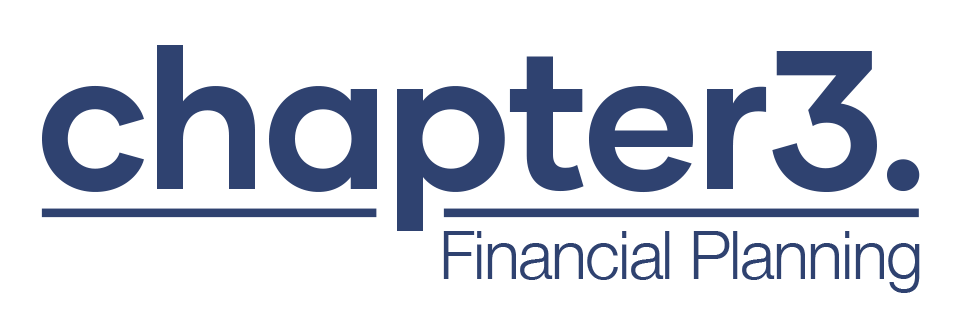9 exciting ways your SSAS pension could boost your business
When you set up a small self-administered scheme (SSAS) as an employer, you create so many opportunities for yourself, your fellow trustees, and your business. In fact, a SSAS is one of the most versatile types of pension funds out there, and used to its full potential can be almost like having your own bank.
Read on to discover nine exciting ways a SSAS can help you save for retirement and boost your business in the meantime.
1. Buy commercial property and rent it to your business
Buying commercial property is one of the biggest opportunities afforded to you by a SSAS. When you invest in a commercial property, as well as the pension fund benefitting from the increase in value over time – which is exempt from Capital Gains Tax (CGT) due to being part of the pension fund – your business can also rent the property from the SSAS.
This can often be a win-win situation, as the pension can receive the rent for the property tax-free and your business can offset the cost of the rent against profits since it’s a taxable expense.
2. Loan money back to your company
If you have sufficient funds in the SSAS and your business requires some financial support to aid growth or simply to provide an injection of cash, you can use the pension scheme to loan money back to the business. This is known as a “loanback”.
There are several benefits to using a loanback facility in a SSAS pension:
- Flexibility: The loanback provides greater flexibility to the sponsoring employer, allowing them to borrow money from their pension scheme at a lower interest rate than they would get from a bank or other lender.
- Control: The employer can control the terms of the loan, including the interest rate, repayment schedule, and security for the loan.
- Tax efficiency: The loanback can be an effective way for the employer to access cash without incurring tax charges, provided the loan is structured correctly.
There are strict criteria for doing this.
- The business can only borrow a maximum of 50% of the net total of the pension fund. If your pension contains £1 million, you can borrow a maximum of £500,000 from it.
- The loan must be made at a commercial rate. While the interest rate can be decided by the trustees, it must be a minimum of 1% above the average base rate of the six biggest high-street lenders.
- The loan must be secured against an asset as a first charge. Note that if your business defaults on the loan, the asset that the loan is secured against may be sold to raise the required amount of capital, which could be extremely detrimental to your business in the long term.
- The loan must be repaid in equal amounts of capital and interest.
- The term of the loan cannot exceed five years. If the business is unable to repay the loan and interest in that time, the outstanding amount can be rolled over for a further five years. This can only be done once.
It’s important to comply with these criteria and to document the loan correctly – otherwise you could be liable for a tax charge.
3. Lend to other businesses
As well as the opportunity to loan to your own business, you could offer loans to other limited companies too, provided they are unconnected to the sponsoring employer or any of the members of the SSAS.
The SSAS fund will benefit from the interest on the repayments of the loan, which can be received tax-free, helping you to boost your pension fund without using more of your own profits or income.
4. Buy shares in the great companies of the world
Like many standard pension schemes, you can use your SSAS to invest in stocks and shares to give it the opportunity to grow in value over time.
But one of the perks of using a SSAS over, say, a self-invested personal pension (SIPP) or other type of pension scheme is that you have a lot more flexibility in what you can invest in.
This could include:
- Stocks and shares traded on a HMRC-recognised stock exchange
- Stocks and shares on alternative investment markets
- Equities on an overseas stock market
- Authorised unit trusts (excluding any that contain residential property)
- Shares in investment trusts.
5. Buy shares in other private limited companies
Third party company investing is another opportunity you have as a trustee of a SSAS. Not only can you invest in stocks and shares on a recognised public stock market, but you can also buy shares in private limited companies.
This can be a great way to invest in start-up growth companies, but it’s important to follow the proper procedures when buying shares of this nature as they are usually considered high-risk investments.
6. Invest in land
While you aren’t permitted to buy or own residential property with your SSAS, you can invest in development land regardless of whether it will later be used for commercial or residential property.
The advantages of investing in land include:
- Tax relief on the contributions added to the SSAS, that will be used to invest in the land
- Any gains made from an increase in value of the land are exempt from CGT while they remain in the SSAS.
If the land you have bought is developed for residential purposes, you must sell your investment before it becomes habitable to comply with the regulations for the SSAS.
7. Buy gold or other commodities
Commodities such as gold can be a useful way to diversify your investment portfolio within your SSAS. As well as offering the potential for positive investment returns, they could also help to inflation-proof your portfolio since they tend to react differently to market volatility and economic uncertainty than traditional stocks and shares. Remember that this performance is not guaranteed though.
There are, of course, other commodities to invest in as well, alongside or instead of gold. Other examples include:
- Oil and gas
- Precious metals, such as silver
- Industrial materials, such as copper and steel
- Agricultural commodities such as livestock, wheat, or coffee
- Cryptocurrency such as bitcoin.
Investing in specialist materials like commodities can increase the level of risk that your portfolio is exposed to. So, it’s sensible to ensure that you invest in a diverse range of asset classes to balance that risk.
8. Borrow money to purchase investments
You can borrow up to 50% of the net asset value of your SSAS to allow you to invest in further assets such as land or commercial property (although, provided all trustees are satisfied that the purchase would be beneficial to the scheme, you can use the loan to purchase or invest in anything that’s permitted within a SSAS). The net asset value of the scheme is defined as the total value of the fund minus any existing borrowing.
The loan could come from an individual, another company, or a bank. The lender will often use any property purchased by the SSAS as security for the loan. The benefit of taking out a loan to buy property through your SSAS rather than as a company is that the income you earn from renting out the property may be eligible for Income Tax relief, and so can be used to repay the interest on the loan.
9. Receive tax relief of up to £125,000
When your business sponsors a SSAS, it can contribute up to £500,000 to the fund without it being allocated to a specific member of the scheme. These contributions are usually eligible for Corporation Tax relief, meaning that if you utilise the full allowance, you could save a maximum of £125,000 in Corporation Tax, given the increase to the main rate from April 2023 to 25%.
Contributions made by the business in this manner are held in a “General Unallocated Fund”. While in this fund, the money can be used to make investments for the scheme, for loanbacks, and to borrow money for future investments too. This is especially helpful in circumstances when each trustee has already contributed the maximum Annual Allowance for that tax year.
Get in touch
Managing a SSAS as a sponsoring employer can be complex, but as you can see it can also bring a whole host of benefits to the trustees and your business. If you’d like some support in setting up or running your SSAS, we can help.
Say hello to us info@chapter3fp.co.uk, call us on 0161 541 2826 or submit a contact form on our website.
Please note
A pension is a long-term investment not normally accessible until 55 (57 from April 2028). The fund value may fluctuate and can go down, which would have an impact on the level of pension benefits available. Past performance is not a reliable indicator of future results.
The tax implications of pension withdrawals will be based on your individual circumstances. Thresholds, percentage rates and tax legislation may change in subsequent Finance Acts.
The value of your investment can go down as well as up and you may not get back the full amount you invested. Past performance is not a reliable indicator of future performance.
Crypto assets are not regulated financial products so please be aware that trading them carries a considerable amount of risk for your capital. Cryptocurrencies are also not covered by existing consumer protection laws.
This article is for information only. Please do not act based on anything you might read in this article. All contents are based on our understanding of HMRC legislation, which is subject to change.

